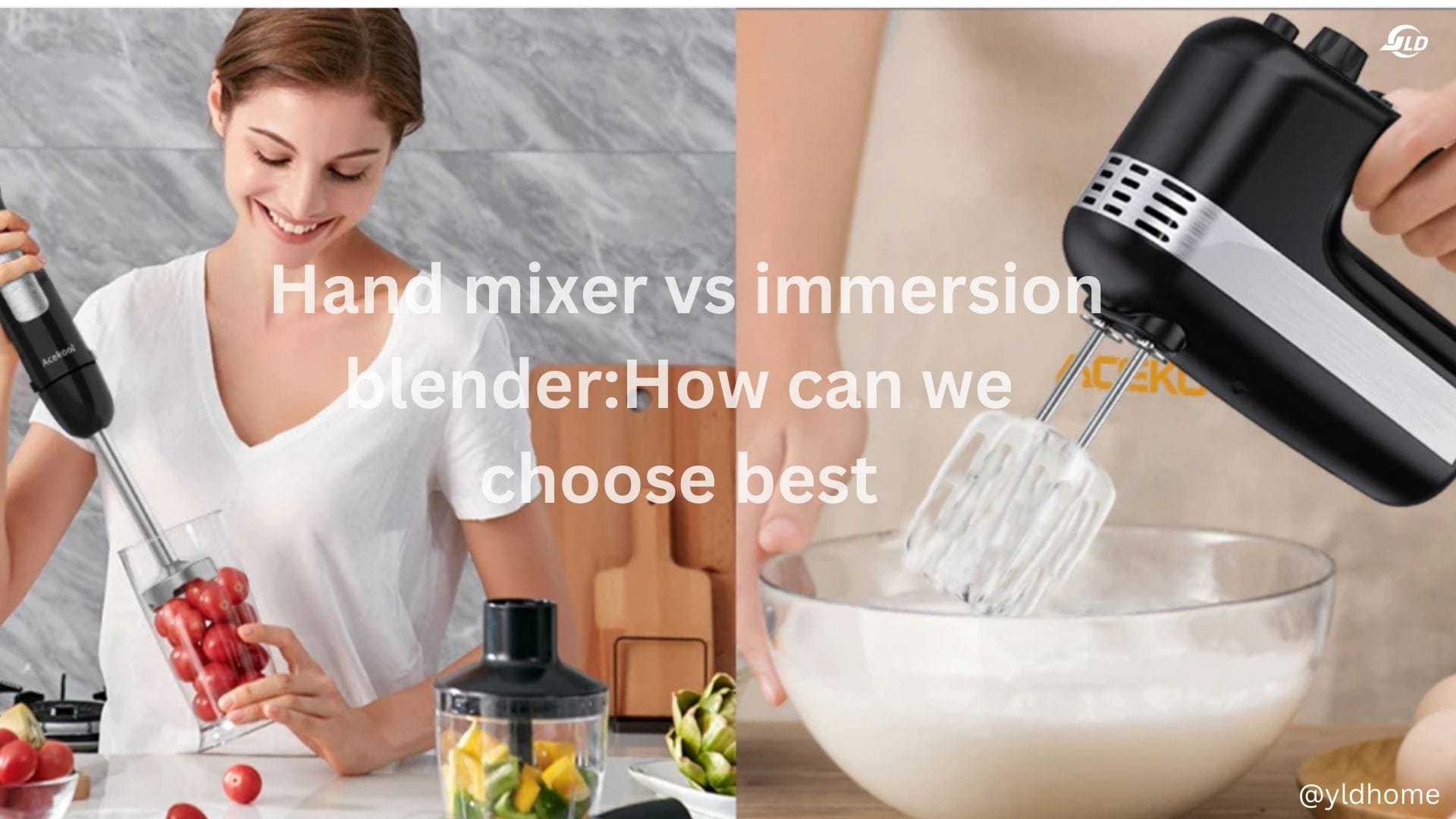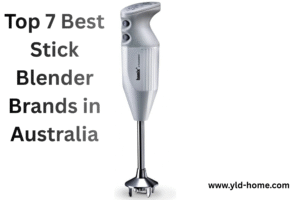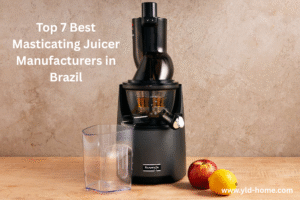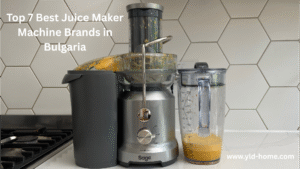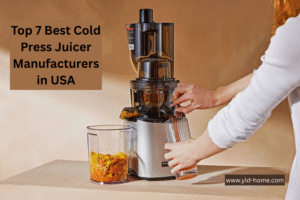The main distinctions between hand mixers and immersion blenders lie in their design and the types of food preparation they facilitate. A food mixer, equipped with two beaters or a whisk, is designed to blend wet and dry ingredients, making it perfect for whipping or mixing smaller to medium batches such as frosting, scrambled eggs, or baking mixtures. On the other hand, an immersion blender uses blades to blend, puree, or chop ingredients like nuts and produce, offering the convenience of blending directly in the cooking vessel. While food mixers serve as compact alternatives to stand mixers, hand blenders provide the functionality of a traditional countertop blender without taking up valuable counter space.
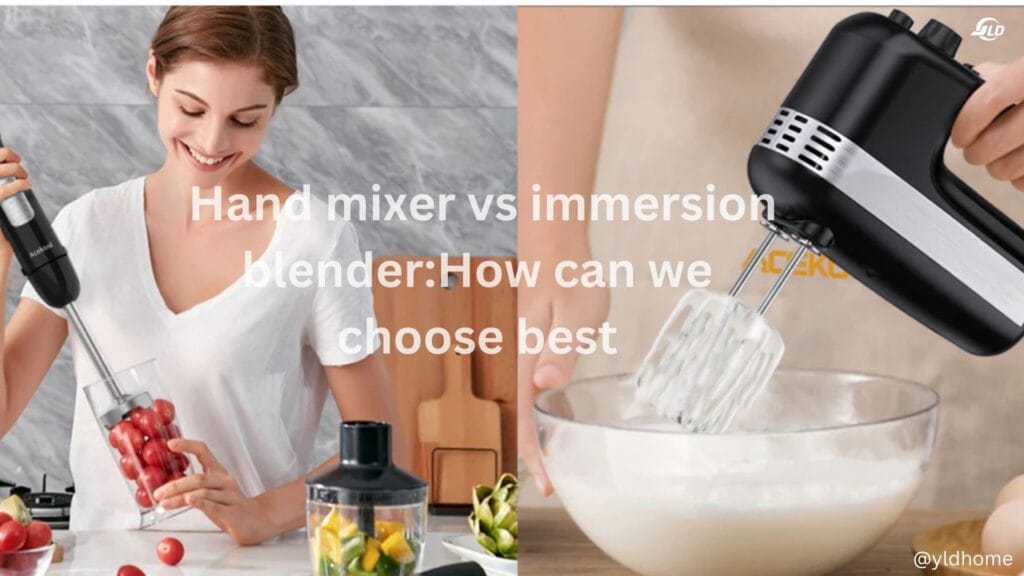
What Are the Common Uses of a Hand Mixer?
A food mixer is perfect for lighter kitchen tasks, making it easy to blend icings, whip air into a light souffle, or prepare a creamy mousse. It’s great for mixing, whisking, creaming, or folding ingredients for small to medium-sized batches. Using the Pro Whisk Attachment with a YLD® 7-Speed food Mixer, you can whip egg whites into peaks or create whipped cream for your desserts.
In addition to baking, a hand mixer can shred chicken or pork for BBQ sandwiches, knead dough for sourdough, or mash avocados for guacamole or toast toppings.
WHEN SHOULD YOU USE A HAND MIXER?
A food mixer is ideal when you need to mix ingredients directly in a pot or dish, or when working with smaller or lighter batches. Cordless models from YLD® provide the convenience of moving freely around your kitchen while handling multiple tasks. They combine dry and liquid ingredients effectively and offer various speed settings for different tasks. With attachments like a Pro Whisk, Dough Hook, and Blending Rod on YLD® food mixers, you can expand your cooking options.
You can use a food mixer to make customizable recipes like Mascarpone Buttercream Frosting, with flavor variations such as coffee, coconut, or lavender. It’s also great for blending ingredients like peanut butter, eggs, flour, and chocolate for a rich Peanut Butter Chocolate Mousse Pie.
What is an immersion blender used for?
An hand blender can blend, chop, whip, and puree, performing many of the same tasks as a countertop blender with the added convenience of being handheld and taking up less space. With a YLD® stick blender, the blades can be placed directly into a jar, bowl, or pot on the stovetop. It’s ideal for chopping nuts for fresh pesto, emulsifying oil and vinegar for salad dressings, or creating vibrant salsas. You can also use it to blend smoothies directly in a to-go container or prepare sweet treats like sorbets and shakes.
WHEN TO USE AN IMMERSION BLENDER?
Use an hand blender when you need the convenience of mixing or combining ingredients directly in a single dish or container, such as a stovetop soup or curry. This simplifies the cooking process and reduces cleanup since you can blend ingredients right in the pot without transferring them to a countertop blender. An stick blender is perfect for blending ingredients directly on the stovetop for dishes like Roasted Carrot Soup, and it’s especially useful for making a Banana Berry Smoothie, allowing you to blend fruits and ice right in your to-go container for busy mornings.
Can a Hand Mixer Serve as a Substitute for an Immersion Blender?
A food mixer can be a suitable alternative to an hand blender when it comes to blending liquid and dry ingredients, such as in the preparation of cake or cookie batter, creaming butter with sugar, or whipping frosting. Food mixers excel at incorporating air into mixtures, resulting in light, airy baked goods. However, because the beaters of a food mixer are not designed for cutting or chopping, they are not suitable for tasks that require pureeing or blending ingredients. In such cases, a YLD® immersion blender, with its sharp blades, is the more appropriate tool.
Can an Immersion Blender Replace a Hand Mixer?
An hand blender can step in for a hand mixer when dealing with more fluid ingredients. The sharp blades of a YLD® immersion blender are effective at chopping and blending, but they are not ideal for tasks like folding in chocolate chips or mixing thicker doughs for bread or pasta. The unique advantage of a YLD® immersion blender lies in its ability to blend while simultaneously chopping or pureeing. For tasks that don’t require these actions, a food mixer is the preferred choice.
How to Ensure Timely Delivery When Ordering Hand Mixers or Immersion Blenders
1. Select Dependable Suppliers with Clear Shipping Policies
When purchasing food mixers or immersion blenders in bulk, it’s crucial to choose suppliers with well-defined delivery policies. Ask about their typical shipping timelines to avoid any unexpected delays. Be sure to understand the supplier’s minimum order quantity (MOQ) before placing your order.
2. Evaluate the Supplier’s Shipping and Logistics Capabilities
Ensure that the supplier has strong logistics capabilities. Trusted manufacturers of hand mixers or stick blenders should consistently meet their shipping deadlines. Opt for suppliers who are proactive in communication and provide regular updates throughout the shipping process.
3. Foster Strong Relationships for Improved Service
Developing a solid relationship with your supplier can lead to better customer service and faster deliveries. Suppliers are more likely to prioritize long-term partners, especially when there is regular communication and mutual trust.
4. Perform Market Research to Find Reliable Suppliers
Conduct thorough research to identify suppliers with a track record of high-quality products and dependable delivery times. By establishing contact with reputable companies and keeping in touch frequently, you can stay informed about potential shipping delays or changes in delivery schedules.
FAQ: Hand Mixer vs. Immersion Blender
1. What is the main difference between a hand mixer and an immersion blender?
A food mixer is designed for mixing, whipping, and beating ingredients, primarily for baking tasks like making batters and doughs. An hand blender, on the other hand, is equipped with sharp blades that chop, blend, and puree ingredients, making it more suitable for soups, sauces, and smoothies.
2. Can a hand mixer be used to make smoothies?
No, a food mixer is not ideal for making smoothies. It lacks the sharp blades necessary to blend fruits and other ingredients into a smooth consistency. An hand blender is better suited for this task due to its ability to puree and blend.
3. Is an immersion blender good for whipping cream?
While an immersion blender can whip cream, it may not achieve the same light and airy texture as a food mixer. A food mixer is specifically designed to incorporate air, making it the better choice for tasks like whipping cream or egg whites.
4. Which appliance is easier to clean, a hand mixer or an immersion blender?
An hand blender is typically easier to clean as it often has a detachable blending arm that can be rinsed or washed separately. A food mixer, with its beaters and multiple components, may require more effort to clean thoroughly.

